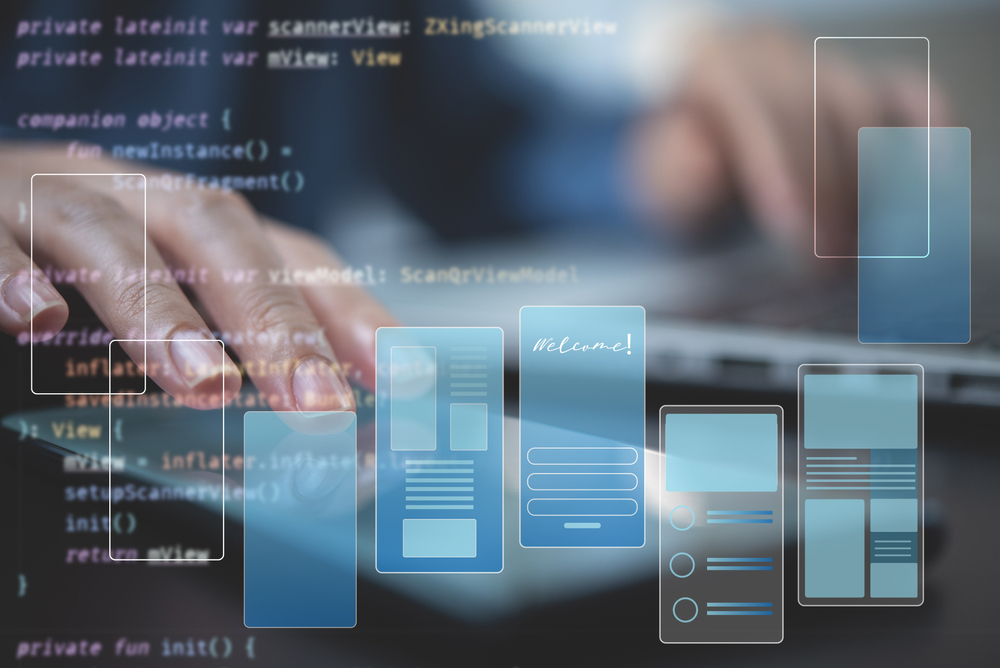
Mobile app development is an ongoing process that includes turning an idea into an app that works well and is easy for people to use. From coming up with ideas to writing code to putting the app on the market, every step is important for making sure the app works well. We’ll go over all the steps needed to make a mobile app in this detailed guide, giving you tips and advice for each stage of the process.
Conceptualization and Ideation:
- Define Your Purpose:
Clearly articulate the purpose of your mobile app. Understand the problem it solves or the value it provides to users. This is the foundation upon which your entire development process will be built.
- Market Research:
Conduct thorough market research to identify competitors, target audiences, and potential challenges. Analyze existing apps in the same niche and gather insights to ensure your app has a unique selling proposition.
- User Personas and Journey Mapping:
Create detailed user personas and map out their journey within your app. This helps in understanding user needs, preferences, and pain points, guiding the development process.
Planning and Wireframing:

- Feature Set and MVP:
Define the core features that will make up the Minimum Viable Product (MVP). Prioritize features based on their importance and potential impact on the user experience.
- Technology Stack:
Choose the right technology stack for your mobile app. Consider factors such as platform (iOS, Android, or cross-platform), programming languages, and frameworks.
- Wireframing and Prototyping:
Create wireframes and prototypes to visualize the app’s structure and flow. This step is crucial for refining the user interface (UI) and user experience (UX) design before development begins.
Design:
- UI/UX Design:
Collaborate with designers to create an intuitive and visually appealing UI/UX. Pay attention to color schemes, typography, and overall design consistency. Ensure the design aligns with the branding and target audience preferences.
- Interactive Prototypes:
Develop interactive prototypes to simulate the user experience. This allows for early user testing and feedback, helping to identify any design flaws or improvements needed.
Development:
- Agile Development Methodology:
Implement an agile development methodology to facilitate iterative development and continuous improvement. Break down the project into sprints and regularly reassess priorities and goals.
- Coding Standards and Best Practices:
Enforce coding standards and best practices to maintain code quality and ensure scalability. Regular code reviews and testing should be integral parts of the development process.
Cross-Platform Development:
If targeting multiple platforms, consider cross-platform development frameworks like React Native or Flutter. This approach can streamline development and maintenance efforts.
Testing:

- Quality Assurance:
Conduct thorough testing to identify and fix bugs, usability issues, and performance bottlenecks. Perform functional testing, user acceptance testing, and compatibility testing across different devices and platforms.
- Security Testing:
Prioritize security testing to safeguard user data and protect against potential vulnerabilities. Implement encryption protocols, secure authentication mechanisms, and regularly update security measures.
Deployment:
- App Store Submission:
Follow the guidelines of the respective app stores (Apple App Store, Google Play) for submission. Ensure that all necessary documentation, assets, and compliance requirements are met.
- Beta Testing:
Before public release, conduct beta testing with a select group of users to gather feedback and identify any last-minute issues. This helps refine the app before a wider audience gets access.
Post-Launch and Maintenance:
- User Feedback and Analytics:
Encourage user feedback and leverage analytics tools to monitor user behavior. Use this data to make informed decisions for updates and improvements.
- Regular Updates:
Keep the app updated with new features, improvements, and security patches. Regular updates demonstrate commitment to the app’s success and keep users engaged.
- Customer Support:
Establish a robust customer support system to address user queries and issues promptly. Positive user experiences post-launch contribute to app retention and positive reviews.
Integration of Emerging Technologies:
- Artificial Intelligence (AI) and Machine Learning (ML):
Explore opportunities to integrate AI and ML to enhance user personalization, predictive analytics, and automation within the app. This could involve features like recommendation engines, chatbots, or intelligent search functionality.
- Augmented Reality (AR) and Virtual Reality (VR):
In industries like gaming, education, or healthcare, consider incorporating AR and VR for immersive user experiences. This can create new dimensions of interaction and engagement within your application.
- Internet of Things (IoT) Integration:
For applications with smart home or connected device functionalities, leverage IoT to provide users with seamless control and monitoring capabilities.
Accessibility and Inclusivity:

- Accessibility Standards:
Prioritize accessibility by adhering to international standards (such as WCAG) to ensure that your app is usable by people with disabilities. This not only expands your user base but also aligns with ethical and inclusive development practices.
- Multilingual Support:
Consider implementing multilingual support to cater to a diverse user base. This is especially important if your app targets a global audience.
Enhanced Security Measures:
- Biometric Authentication:
Implement biometric authentication methods (fingerprint, facial recognition) to enhance the security of user data. Biometrics provides a convenient and secure way for users to access their accounts.
- Blockchain Technology:
Explore the use of blockchain for securing sensitive transactions and data. This is particularly relevant for financial or healthcare applications.
Conclusion:
Mobile application development is a multifaceted journey that requires careful planning, execution, and continuous improvement. Navigating through the stages of conceptualization, planning, design, development, testing, deployment, and post-launch maintenance demands a holistic approach. By embracing emerging technologies, prioritizing accessibility, and enhancing security, developers can create applications that not only meet current standards but also remain relevant in the fast-paced world of mobile technology. Continued learning and a commitment to excellence will contribute to the long-term success of your mobile application.


